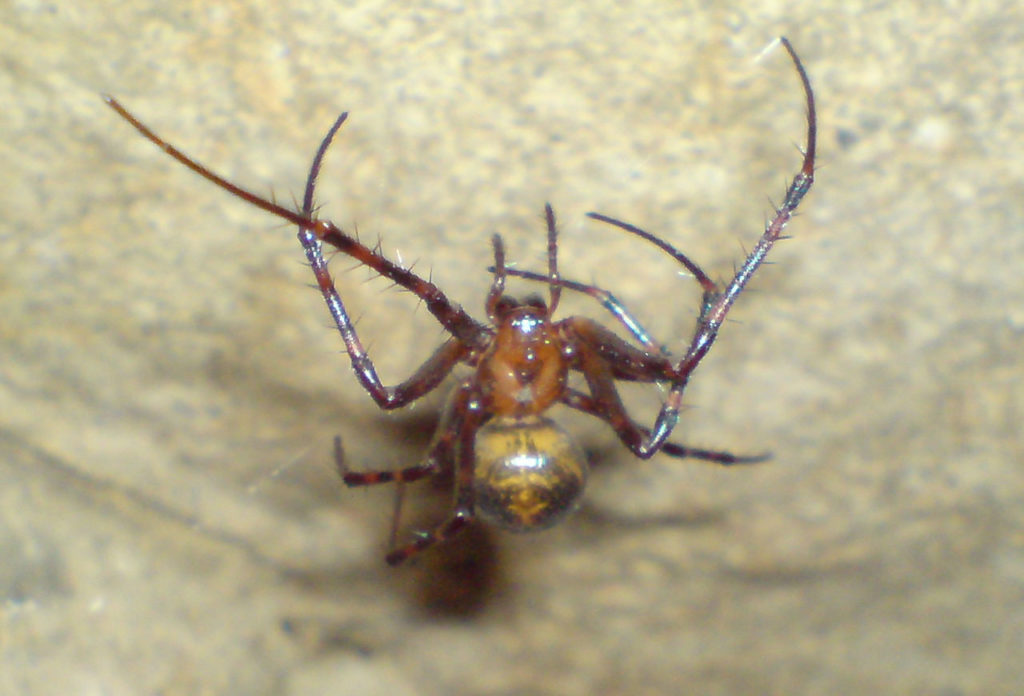Invasion of the giant hornets… or is it?
- Complaining about the Mainland - 17th August, 2024
- New island designation – is it just greenwash? - 26th April, 2024
- Police and Crime Commissioners – a solution or a problem? - 21st April, 2024
There’s a buzz going about… and it’s created by a load of hornets. Regular readers will know about the Asian Giant Hornet, Vespa mandarinia, which has been causing a bit of debate. Quite a few people emailed The Ranger or posted to the blog, worried (or interested) that they might have found a specimen of V. mandarinia in their house or garden. One of these was Ranger reader Dave Wall, who said:
I have just seen a massive hornet in my garden. It was hovering just above an ants nest. It only stayed around for a few seconds before flying off. I have seen ordinary hornets fairly commonly in and around our house, but nothing like this. It was not the European Hornet ! I would estimate it to be about 60mm in length. It’s bright yellow head and huge abdomen were the most striking features. We are in a very rural fruit growing area in Warwickshire.
The Ranger rather optimistically requested photos, and splendidly, Dave was able to comply. A few days later he gamely captured one of the beasts and took some great photographs – here’s one:

We can see from Dave’s ruler that the body length of this creature is a somewhat less scary 35mm, which is well within the range of the European hornet V. crabro. Indeed, this is no Asian monster but our native European hornet, and as such is little to worry about. If you need convincing perhaps the simplest way to tell them apart is the colour of the thorax (the bit of the body between the head and the abdomen) which is very clearly brown in UK hornets (less so in other European races), but definitely black in the Asian one. This one, as you see, is quite gingery-brown. This is a worker although it’s on the big side. Queens and workers have seven segments to the abdomen, whereas males have only six. The queen can be up to 50mm in length, so quite possibly that’s what Dave saw the first time. The European hornet is actually less aggressive than the common wasp, and although it looks fearsome, is less likely to sting. And although it will nest in urban and suburban situations, it prefers the countryside. So you don’t need to be too worried, if you leave them alone they will probably not bother you and go away. Interestingly, it’s not just The Ranger who has had these enquiries. The Ranger’s correspondent Stuart Hine, who was at the time manager of the Natural History Museum’s Insect Identification Service, explains more:
The Insect Identification Service at the Natural History Museum is receiving unprecedented enquires from the public about the insect. Most people are concerned that they are seeing the giant Oriental hornet or the Asian ‘killer’ hornet, probably due to recent media attention these species have received. But this is not the case. What people are seeing are queens of our native European hornet, Vespa crabro, our largest species of social wasp. Queen hornets are formidable looking insects with a body length of up to five centimetres. In the UK emerging queens are not usually seen until about early-mid May. However, the unseasonable mild spring we have experienced this year appears to have roused them from their slumber earlier with the first sightings in early March.
Read this post if you think you have got an Asian Hornet.


We live in the Midlands UK. Being a wasp-phobe, I was alarmed to see a “massive wasp” at our kitchen window around 10:30pm three nights ago, measuring about 35mm body length. Last night, my wife & I had a restless sleep after seeing about 10-15 of the critters on the same window, some gathered in small groups, facing each other (eating?), others flying into the window with an appreciable “thud”… All windows were rapidly and firmly shut: every touch of the bedsheet last night had us imagining they had got into the house somehow! I am relieved to read they are generally less aggressive than normal wasps and only sting if provoked. Presumably the nest is some way off and it is just the light that attracts them, so we can sleep easy.
Can three stings really kill a horse, or is this just an old wives’ tale?